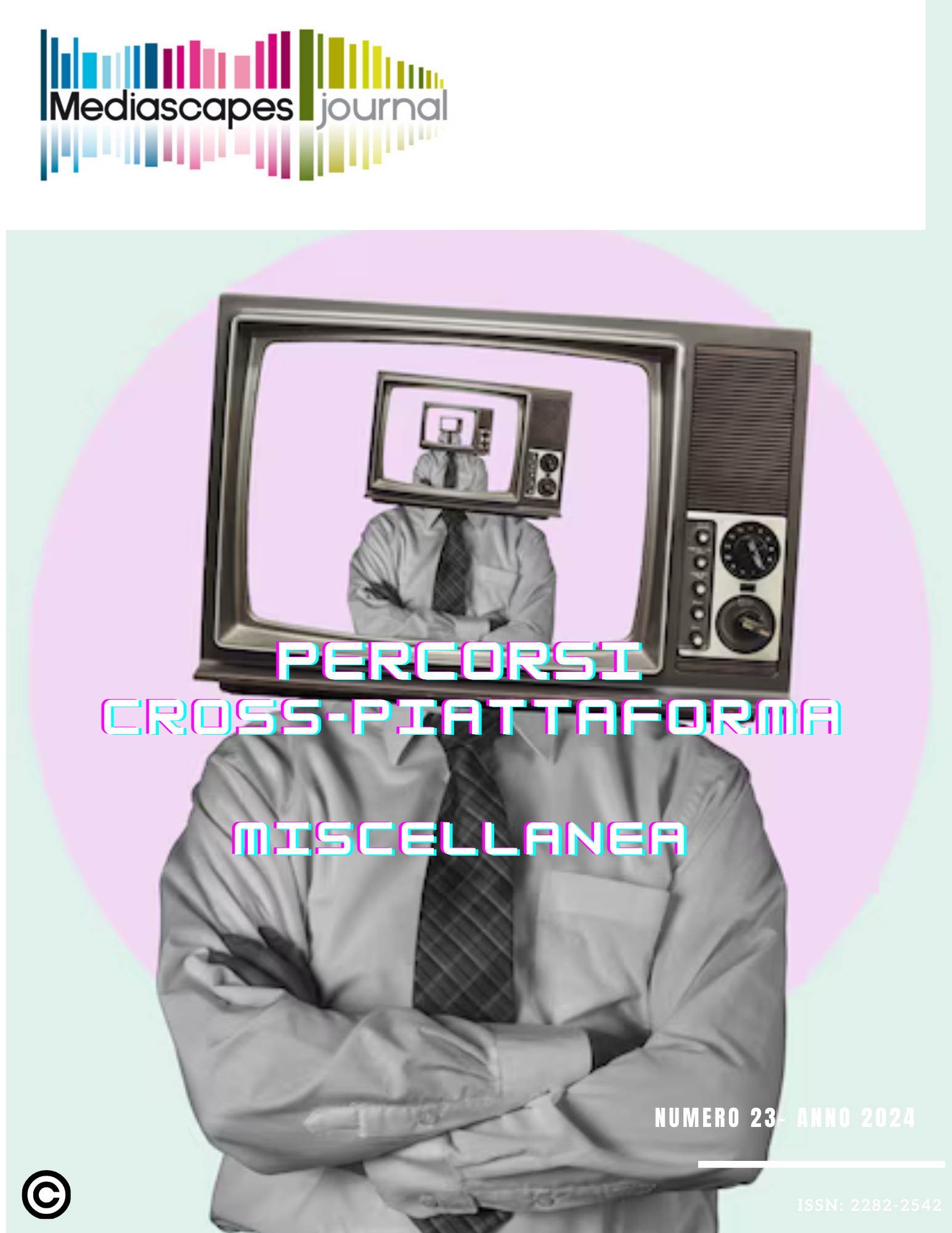Fake news
Origins, connotations (and decline?) of a successful expression
Parole chiave:
fake news, content analysis, media, newspaper, connotationsAbstract
The objective of this research is to analyse the evolution and connotations of the expression “fake news” from its inception to its current use. The investigation focuses on the origin, the quantitative trajectory of its use, and the macro-categories of meaning associated with this term. To achieve these objectives, a content analysis was conducted on prominent media outlets between 2016 and 2022. The dataset, comprising 30,035 articles, enabled the tracing of the term’s usage trends. Furthermore, sub-corpus sampling and computer-assisted qualitative techniques were employed to assess the evolving connotations and macro-categories of meaning related to the expression. The results indicate that the mature usage of the term “fake news” emerged in November 2016. The term’s usage increased significantly, reaching its peak in 2018, and then spread into broader realms. Initially, the expression was primarily associated with the “world of the Net” and the specific political events of 2016, but it gradually expanded to encompass journalism and socio-political conflict in general. Even during the decline and stabilisation that took place between 2019 and 2022, the term “fake news” continued to be used pervasively, with references to journalism overtaking those to the online world. This was combined with a continuous “background noise” of oppositional and emotional connotations. The term “fake news” was originally designed to criticise online information. However, it has since evolved into a stigmatising and generic label that is utilised in political and social discourse to discredit opponents. This negative connotation erodes trust in media and institutions, intensifies divisive rhetoric, and hinders open and democratic debate in increasingly complex social systems.
##submission.downloads##
Pubblicato
Come citare
Fascicolo
Sezione
Licenza

TQuesto lavoro è fornito con la licenza Creative Commons Attribuzione 4.0 Internazionale.
Gli autori che pubblicano su questa rivista accettano le seguenti condizioni:
- Gli autori mantengono i diritti sulla loro opera e cedono alla rivista il diritto di prima pubblicazione dell'opera, contemporaneamente licenziata sotto una Licenza Creative Commons - Attribuzione che permette ad altri di condividere l'opera indicando la paternità intellettuale e la prima pubblicazione su questa rivista.
- Gli autori possono aderire ad altri accordi di licenza non esclusiva per la distribuzione della versione dell'opera pubblicata (es. depositarla in un archivio istituzionale o pubblicarla in una monografia), a patto di indicare che la prima pubblicazione è avvenuta su questa rivista.
- Gli autori possono diffondere la loro opera online (es. in repository istituzionali o nel loro sito web) prima e durante il processo di submission, poiché può portare a scambi produttivi e aumentare le citazioni dell'opera pubblicata (Vedi The Effect of Open Access).


